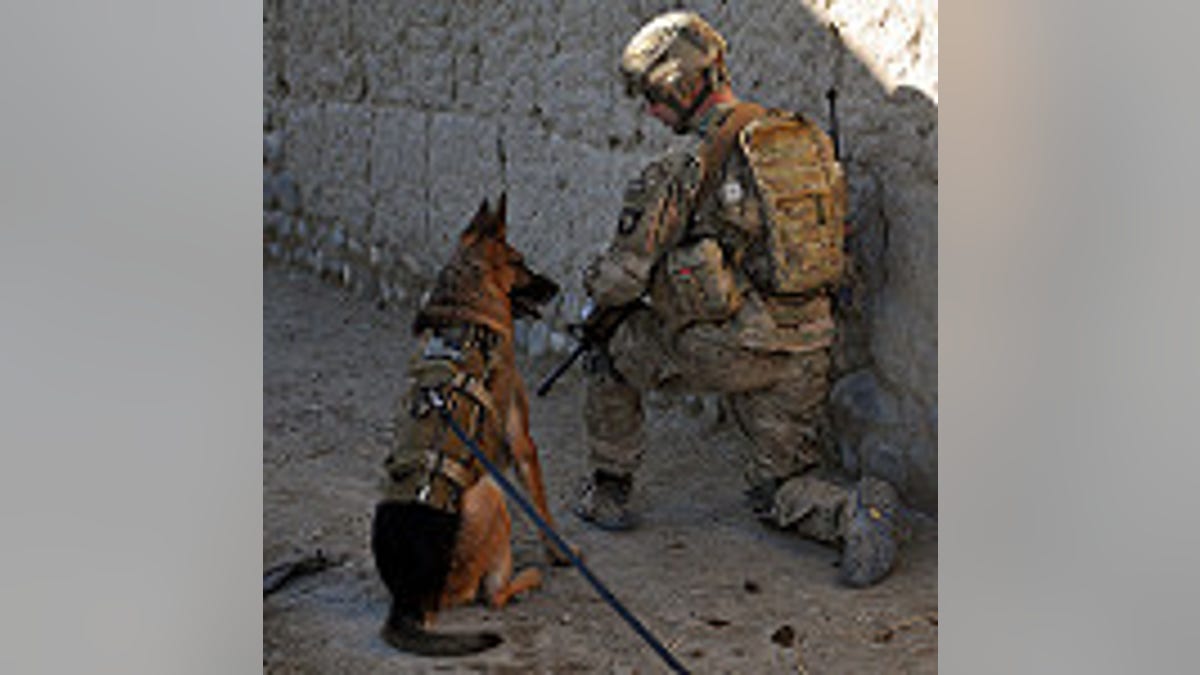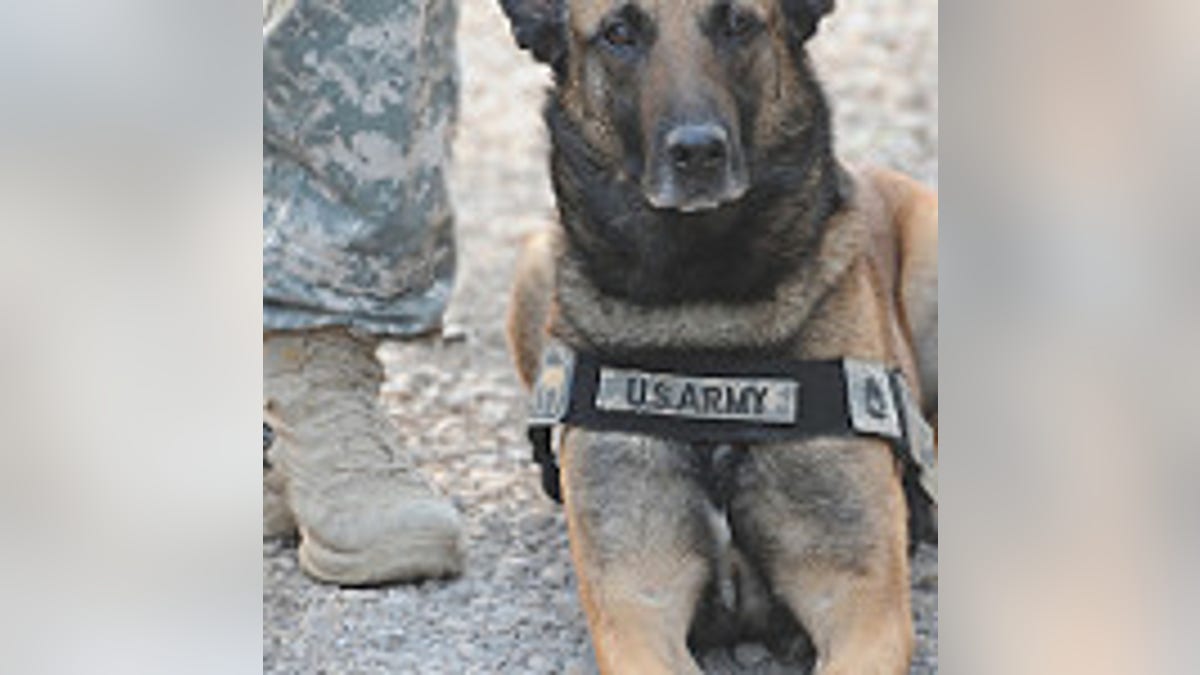
U.S. Army 1st Sgt. Brian Zamiska, 3rd Battalion, 187th Infantry Regiment, 3rd Brigade Combat Team, 101st Airborne Division (Air Assault), pulls security with a U.S. Air Force working dog, Jan. 6, 2013, during a patrol with the Afghan Border Police in Tera Zeyi district, Afghanistan. (U.S. Army photo by Spc. Alex Kirk Amen)
By now, Daniel had been in Afghanistan two months. It was July 2012, his third tour of duty and his first with Oogie, his military working dog. They were leading their platoon on yet another patrol, clearing a no-name village with maybe 15 houses and one mosque, when they began taking fire.
“The first thing that went though my mind,” he says, “was, ‘S- -t. My dog’s gonna get shot.’ ”
It was a perfect L-shaped ambush, bullets coming from the front and the right, the platoon pinned down in a flat, open landscape. Along the road were shallow trenches, no more than 14 inches deep. Daniel grabbed Oogie, squeezed him in a hole, then threw himself over his dog.
It went against all his Army training. “They tell us it’s better for a dog to step on a bomb than a US soldier,” he says. The truth is Daniel, like just about every other dog handler in the armed forces, would rather take the hit himself.
Five weeks into their training, Daniel and Oogie were inseparable. They showered together. They went to the bathroom together. When Daniel ran on the treadmill, Oogie was on the one right next to him, running along.

A military working dog wears Doggles to protect his eyes as a Chinook helicopter takes off in Parwan province, Afghanistan, May 11, 2010. (U.S. Army photo by Sgt. Jason Brace)
That week, Daniel got Oogie’s paw print tattooed on his chest.

Kandy, a military working dog, of the 91st Military Police Battalion, listens to a convoy briefing prior to a search for weapons caches and targeted insurgents at Joint Security Station Beladiyat, eastern Baghdad, Iraq, on Feb. 28, 2009.
“The few times you safeguard your dog are slim compared to what he does every time you go outside the wire,” Daniel says. “That’s your dog. The dog saves you and saves your team. You’re walking behind this dog in known IED hot spots. In a firefight, the dog doesn’t understand.”

